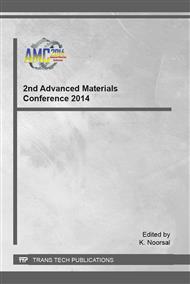p.537
p.542
p.547
p.552
p.557
p.561
p.566
p.571
p.579
Catalytic Gasification of Oil Sludge Wastes from Petroleum Industries for Hydrogen Production
Abstract:
Catalytic gasification of oil sludge such as aromatic volatile organic compounds (AVOCs) (composed of benzene, toluene, xylene, ethylbenzene, trimethylbenzene, and styrene) is attractive for the industrial and environmental aspect. In this study, catalytic gasification of oil sludge was conducted in the presence of 10 wt% NiO/Al2O3 at temperature of 773 K in a lab-scale gasifier. Particles of NiO/Al2O3 in the size of 10-20 nm were detected by scanning electron microscopy (SEM) and transmission electron microscopy (TEM) image analysis. Nitrogen adsorption analysis confirmed the surface area of 10 wt% NiO/Al2O3 as 130 m2/g. Finally, product gases and experimental intermediates were separated by a pressure swing adsorption (PSA) method to generate 99.9% pure hydrogen.
Info:
Periodical:
Pages:
557-560
Citation:
Online since:
January 2016
Authors:
Price:
Сopyright:
© 2016 Trans Tech Publications Ltd. All Rights Reserved
Share:
Citation:


